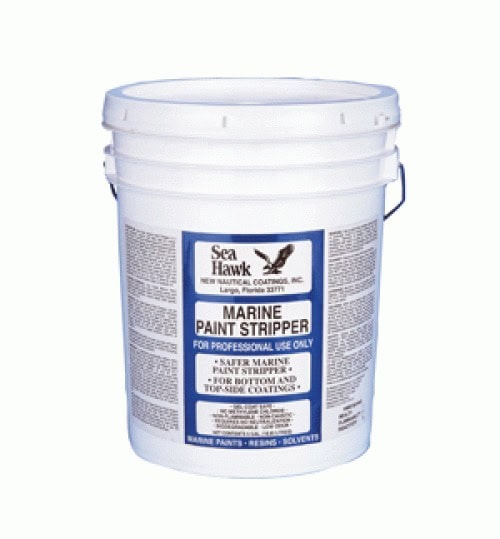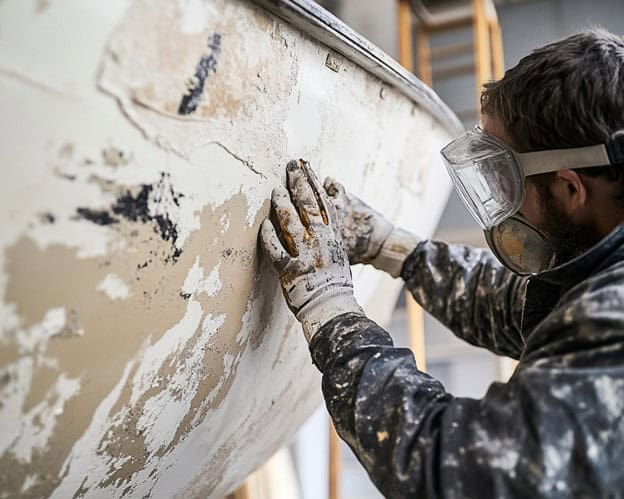Marine paint strippers are essential for removing old, damaged, or unwanted paint from boats and marine structures. They help maintain the vessel’s integrity and appearance, ensuring a smooth surface for new paint and protecting against further wear. Choosing the right paint stripper is crucial for achieving effective results while ensuring safety and compatibility with the surface.
Types of Marine Paint Strippers
Marine paint strippers come in various formulations. Solvent-based strippers are powerful and effective for tackling multiple layers of paint, particularly on metal surfaces, though they can be harsh and require careful handling. Gel-based strippers have a thicker consistency, making them suitable for vertical surfaces and detailed areas. They stay in place longer, allowing for more controlled application. For those concerned about environmental impact, eco-friendly options are available. These strippers use less aggressive chemicals and are designed to be safer for marine life and ecosystems. Sea Hawk Marine Paint Stripper is a notable example, providing a balance between effectiveness and user safety.
Key Considerations for Choosing the Right Marine Paint Stripper
When selecting a marine paint stripper, several factors should be considered. Surface compatibility is essential, as different strippers are suited for metal, fiberglass, or wood surfaces. Safety is also a significant concern; opting for environmentally friendly products can minimize health risks. Effectiveness is important, so choose a stripper proven to work on marine-grade paints. Additionally, ease of application and clean-up should be considered, as some products require specialized tools or techniques. The drying or setting time of the stripper is another factor, as different products have varying timelines for effectiveness.
Step-by-Step Guide to Safely Apply Marine Paint Strippers
Begin by preparing the surface, ensuring it is clean and dry before applying the stripper. Gather the necessary tools, including brushes, scrapers, and safety gear like gloves, goggles, and masks. Apply the stripper evenly across the surface using a brush, following the manufacturer’s instructions for optimal results. Allow the stripper to work as directed, typically waiting until the paint begins to bubble or lift. Once the paint is softened, gently scrape it off, taking care to avoid aggressive scraping that could damage the underlying surface.
Safety Precautions When Using Marine Paint Strippers
Safety is paramount when using marine paint strippers. Always wear protective gear, including gloves, goggles, and masks, to shield yourself from harmful fumes and chemicals. Work in a well-ventilated area or outdoors to avoid inhaling toxic fumes. Proper disposal of paint and stripper residue should follow local regulations to minimize environmental impact.
Eco-Friendly and Biodegradable Options
For those who prioritize environmental considerations, eco-friendly marine paint strippers are available. These products comply with environmental regulations and are designed to be less harmful to marine ecosystems. Look for biodegradable options that help reduce the ecological footprint of your maintenance projects.

This environmentally safe formula is biodegradable, non-flammable, low odor, and has no methylene chloride or other harsh solvents.
Common Mistakes to Avoid When Using Marine Paint Strippers
Several common errors can impact the effectiveness of paint strippers. Using too much or too little product can lead to wasted materials or inadequate paint removal. Scraping too aggressively can damage the surface, so gentle scraping is recommended. Always follow the manufacturer’s instructions to avoid problems and ensure the best results.
Maintenance Tips After Stripping Paint
After removing old paint, it is important to prepare the surface for new paint by thoroughly cleaning it to remove any residue. Ensure the surface is completely dry before applying new paint. Properly store tools and maintain them for future use to ensure they remain in good condition.

